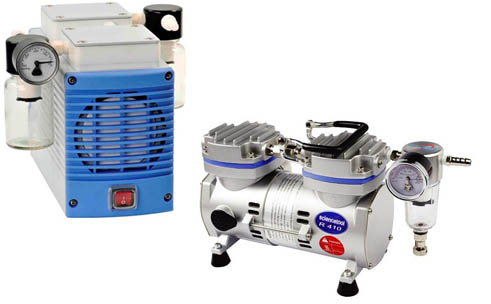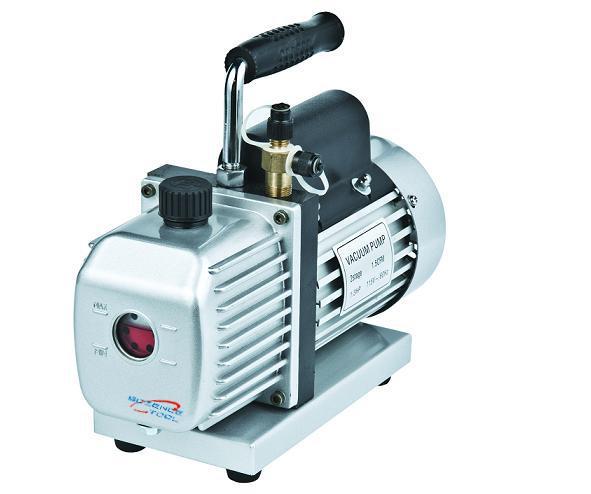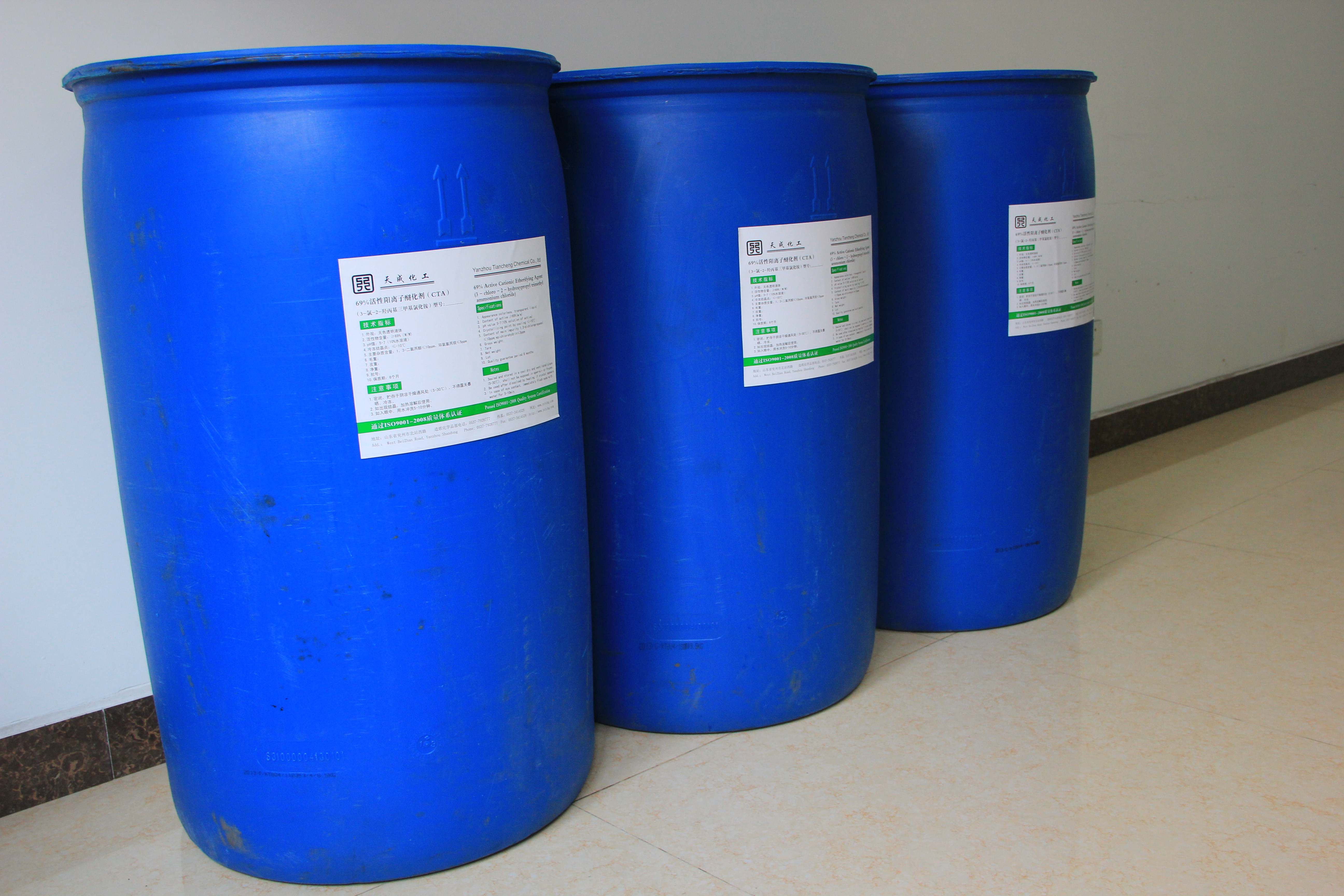How to choose the vacuum pump used in the laboratory is a problem that plagues many users. After using the vacuum pump, many users will encounter vacuum gauge to observe the vacuum is not enough (suction is not enough), the pumping speed is too slow, and it is used in a relatively closed room. There are various problems such as excessive noise or oil mist when the pump is used. And these problems are often related to the selection. 1. Whether the use environment needs to ensure no pollution: Due to the design principle, some vacuum pumps need to use other media to assist the operation of the pump, such as oil rotary vane vacuum pump and water circulation vacuum pump, which need to pour the pump oil and connect the water source respectively. When the pump oil is in use, the oil mist will be emitted into the air and pollute the environment; and the pump must be connected to the water source because it needs to be connected to the water source. Some customers who need to aspirate the cell culture supernatant in the cell room clean room can not use such products. In this case, an oil-free vacuum pump should be selected, and such products can be plugged in. For example, the BV240 cell culture waste liquid vacuum pumping system under the St. Stephen's Sciencetool brand has an oil-free vacuum pump built in. It has no pollution and will not affect the cell room environment. As long as it has an ordinary 220V power supply, it can be used. Suction bottles, liquid suction heads, vacuum gauge adjustment valves, anti-backup protectors and other accessories. 2. Which instrument and equipment are used together: different equipments are used differently, some require higher vacuum, such as vacuum distillation; some require higher pumping speed, such as vacuum drying oven, need to be considered The internal volume of the tank; and the application of vacuum suction filtration is more complicated. It is necessary to examine the filtrate capacity of the filtration, the content of particulate matter in the liquid, and then select the appropriate vacuum or pumping speed according to different conditions. For example, CH411 is a corrosion-resistant diaphragm pump with a vacuum of up to 750mmHg. It is professionally used with rotary evaporators of various brands. The T1127 laboratory oil pump can achieve a high pumping speed of 127L/min, which can be used in a short period. The time reaches the ideal vacuum. For more information on the selection, price and technical parameters of laboratory vacuum pumps, please visit our website. Fixative (dye-Fixing Agent) Active Ingredient: Quaternary ammonium salt cationic surfactant
CAS No.: 26062-79-3
1.Formaldehyde-free Fixing Agent
2.Has no free formaldehyde,no peculiar smell,no irritation to skin, accord to eco request
[Description]:
Formaldehyde-free Fixative Color Fixing Agent is belongs to polymerization polyDADMAC, a cationic polymer. It can make up of macromolecular compound with dye, then achieve to improve soaping and rub fastness of fabrics. It can be used for color fixing for dyeing and printing of reactive dyed fabrics as cotton, linen, silk, and direct dyed fabrics.
[Specification]:
Appearance: Brownish yellow viscous liquid
Ionic character: Cationic
PH Value: 5-8 (1% aqueous solution)
Dissolution: Dissolve in cold water easily.
Composition: Special polymer compound
[Dilution Method]:
With 4-6 times the water and stir to dissolve dilution.
[Direction for Usage]:(To dilute finished product as an example)
A. Padding Process: 5-20g/L, temperature 40°C-60°C, PH Value:5-8, One-dip-one-nip or Double-dip-double-nip.
B. Dipping process: 1-4% (O.W.F), Room temperature 40°C-60°C, PH Value:5-8, bath ratio:1:8-12,Time: 20-30 min.
[Properties]:
1. Concentrated Formaldehyde-free Fixative Fixing Agent has good color fixing property, can obviously improve the dyeing or printing of fabric soaping, washing fastness and wet rubbing fastness.
2. Can be used for much of the association between dye fixation, anti fading property, does not affect the dyeing or printing of fabric vividness. No effect for the original feel, processing fabric has excellent hydrophilic.
3. Formaldehyde-free Fixative widely used for dyeing or printing of the direct, active dye fixing finishing, good fixation effect, especially for the red dye and Cuilan dyes, particularly prominent, fixation is better than the general Formaldehyde-free Fixative.
4. The dye PH value for a wide range, acid, alkali resistance, resistance to hard water, high temperature resistance, an environment-friendly products, does not contain formaldehyde.
Specifications:
3 - 7
Cationic
Package and Storage:
Fixative,Dye-Fixing Agent,Organic Dye-Fixing Agent,Reactive Dye-Fixing Agent Shandong Tiancheng Chemical Co., Ltd. , https://www.tianchengchemical.com
The general user may not be able to understand the relationship between the parameters of the vacuum pump and the actual use effect. Generally speaking, the user mainly considers the following factors when purchasing the laboratory vacuum gauge: 

3. The volume of the matching equipment: the volume of the equipment and the pumping speed parameters of the vacuum pump are related. For example, when used with a general 1000ml vacuum filter bottle, I only need to use the minimum vacuum pump R300 with a pumping speed of 20L/min. Can meet the needs. However, when using a vacuum filter bottle with a large volume or a multi-filter, such as a filter bottle of 5000 ml or more, a triple filter, or a six-filter, the filtration speed is greatly reduced. At this time, it is necessary to select a pump with a higher pumping speed for different sizes of filters, for example, with a 2000-5000ml filter bottle or a triple filter, you can choose R400, the pumping speed is 34L/Min; 5L -10L The filter bottle or the six-filter is required to use the R600 with a pumping speed of 60L/Min or more.
4. What are the accessories needed to ensure proper use: the lack of accessories during the use of some vacuum systems can make operation very difficult. For example, the vacuum regulating valve plays an important role for many purposes. It can observe the working state of the system and adjust the pumping speed according to actual needs. When vacuum filtration is carried out, the anti-back suction accessory set, including the buffer bottle and the water blocking filter, can effectively avoid the problem of sucking and damaging the vacuum pump. It is an extremely useful accessory, such as the BS-02250 water blocking filter built-in hydrophobic. The filter membrane, the air can pass, the liquid can not pass 100%, can completely solve the problem of sucking. When purchasing a vacuum pump, care should be taken to configure the necessary accessories directly for different applications.
Chemical Name: Formaldehyde-free Fixing Agent
Chemical Family: PolyDADMAC
Appearance:
Colorless, Transparent Colloid
Viscosity:
100cps-80000cps
Solid Content:
40%min.
PH (30% solution):
Ionic Nature:
Specific Gravity:
About 1.1

How to choose a laboratory vacuum pump?
Packaging & Shipping